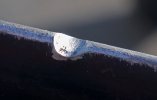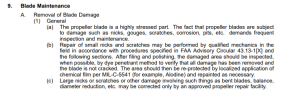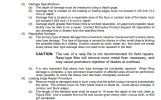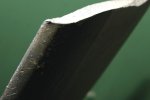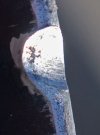mistercrisp
Filing Flight Plan
I was pre flighting a Cessna 172 before a flight with my instructor. I was stunned to find a significant dent in the leading edge of the prop, about 8" in from the tip. What was strange was that it was a perfect semi-circular dent. It looked as if it had been hit with a 3/8" bolt or something. I had never seen anything like that before. It was a perfectly smooth semi circle in the leading edge. So the mechanic came out and said that was beyond spec and there was no way to use a file to fix that large a dent. And then he said, he thought that someone had taxied over a tie down strap which at this FBO has steel "S" hooks on both ends of the nylon straps! Yikes!
So my question is just because I am curious about this, is, what can be done with a prop damaged like that? It is a MacCauley fixed pitch prop. Can damage like this be repaired with a weld in the leading edge and then some kind of heat treatment, or does that kind of damage mean the end of that propeller? Just curious. Thanks for any answers.
So my question is just because I am curious about this, is, what can be done with a prop damaged like that? It is a MacCauley fixed pitch prop. Can damage like this be repaired with a weld in the leading edge and then some kind of heat treatment, or does that kind of damage mean the end of that propeller? Just curious. Thanks for any answers.

